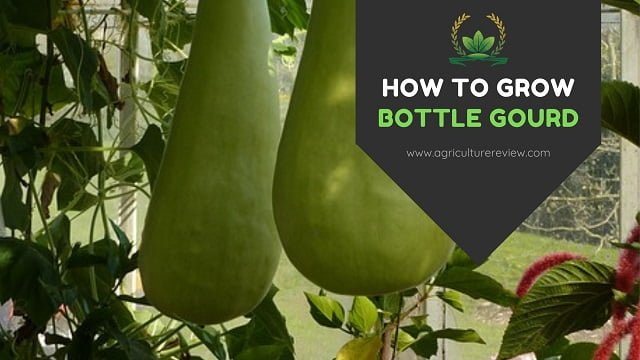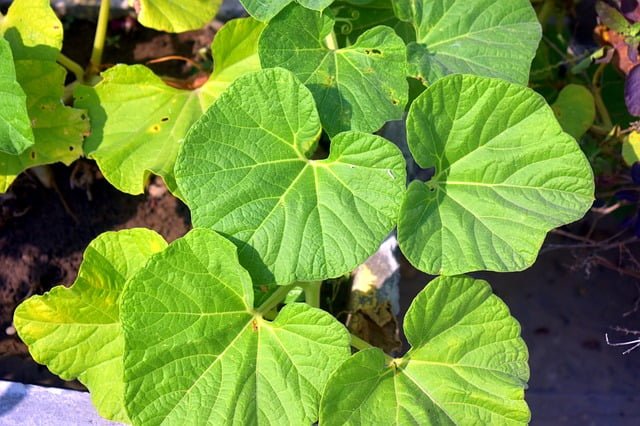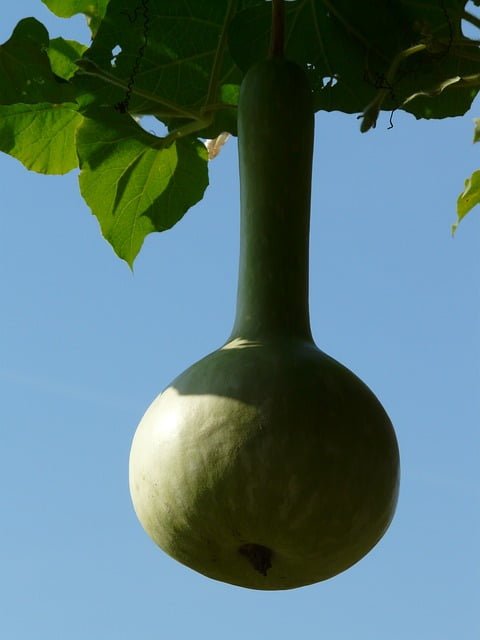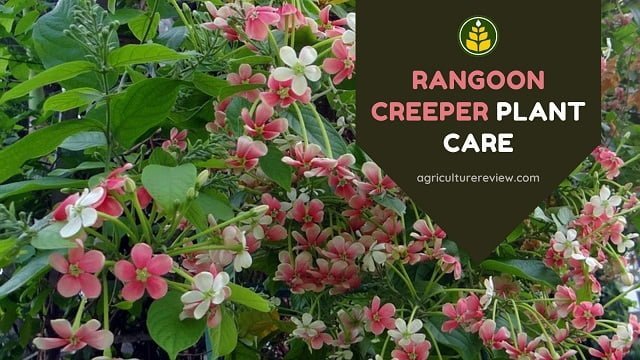This ultimate guide on how to grow bottle gourd will help you to grow bottle gourd. Get to know from sowing of seeds to harvesting vegetable.
Table of Contents
Introduction
“Calabash, Bottle Gourd, or Lauki” is a white-flowered gourd that is of various shapes like small and bottle shaped, huge and rounded shaped to slim and serpentine shaped. Moreover, it is also known as long melons which is a vine and is primarily grown for its delicious and healthy fruit.
They were earlier cultivated to be used as containers, but as the human civilization developed they started eating and realizing Calabash Health Benefits, since then it is cultivated commercially for its delicious Calabash fruit.
Calabash scientific name is Lagenaria sicereria. It is from the Cucurbitaceae family. Researchers all over the world believes that Calabash or Bottle gourd originated from wild species in South Africa. It is very easy to cultivate bottle gourd in Central America, East Asia, Southeast Asia, and South Asia.

How To Grow Bottle Gourd?
To learn how to grow bottle gourd, you will need to know about growing season, potting mix, pot selection, propagation methods, etc. And I am going to tell you all these important points in detail.
Growing Season
Bottle Gourd plant do not love frost. It grows very well under temperature range of 16 to 35 degrees Celsius. Below or above this temperature range germination rate of seeds decreases. Hence, in tropical climate you can easily grow this vegetable plant.
You can start sowing of seeds during early spring or late summer season. Generally in India you can sow seeds in the months of January to Early March. You can also sow seeds in the months of July and August.
Potting Mix
Prepare a good potting mix with 60% loamy soil + 20% dry cow dung powder + 10% coco peat + 5% sand + 5% compost. Fill the container with potting mix and leave a 2-inch distance between the soil surface and rim of the container.
Selection Of Pot
Now choose a large gardener pot that has a capacity of 30 to 60 litres with depth 2 feet and diameter 2 feet. The size of the pot depends on the Calabash varieties. Smaller varieties need 30 to 40-litres container and large variety need 40 to 60-litres container. Ensure that there is a good drainage system with at least 3 to 4 holes at the bottom.
Propagation
You may grow Calabash from seedlings by purchasing well developed high-quality plants from the nursery or by seed germination. If you want to grow it from seed germination, you should purchase good quality seeds from seed sellers or online.
You can germinate bottle gourds seeds from this method too.
READ MORE: TRADITIONAL METHOD TO GERMINATE BOTTLE GOURD SEEDS VERY FAST!
However, I am also going to share the common method of germinating bottle gourd seeds. Soak the Bottle gourd seeds in water for 2 days before sowing. To sow Bottle gourd seeds make 1-1.5 inch deep holes in the potting mix using your finger or any blunt object. Sow 3 to 5 seeds per pot.
Place one seed in each hole. Keep in mind to keep the blunt end of seed towards the base of soil. Cover the holes with loose soil. Apply water in the container gently. Maintain moderate soil moisture till the germination of seeds.
In Near about 7 to 14 days seed will germinate. When the Calabash seedlings have developed about the 3-4 leaf stage. Identify the healthy plant and unhealthy plants. Thin out unhealthy plants from the pot.

Bottle Gourd Plant Care
Once you are successful in germinating seeds, the next step is to care for your healthy seedlings. Providing adequate sunlight, moisture, fertilizer, etc. helps in the development of the plant. Moreover, you also have to deal with pest & diseases efficiently.
Sunlight
Bottle gourd plant loves bright sunlight to grow. Place your pot in the sunny spot where it can receive 5 to 7 hours of direct sunlight every day. Adequate amount of sunlight will help in vegetative growth of the plant. Hence, increased vegetable production in the plant.
However, if you want to increase vegetable yield in your plant, then you can check out this article.
READ MORE: 3G CUTTING: BEST WAY TO INCREASE CROP YIELD
Watering Frequency
Bottle Gourd requires plenty of water to grow. It loves moist soil but hates waterlogged soil, so deep and regular watering is essential. That’s why even after watering heavily maintain good drainage in the pot to remove excess water.
Watering frequency also depends on the climate and size of the plant. When plants reach 12 inches tall, mulch the topsoil with chopped straw. Mulching helps in retaining soil moisture.
Fertilizers
You can either feed your plant with inorganic fertilizers or with organic fertilizers. You can also choose to fertilize with both types of fertilizers simultaneously.
After the Bottle Gourd plant is established you can start feeding with NPK. ¼ teaspoon NPK (10:26:26/ 8:24:24/5:10:10 any combination) fertilizer once after every month. Use dry cow dung 1 teaspoon every 15 days.
If you want to add only organic fertilizers then you can add two to five handful of any organic manure. Apply this once after every 30 days. You can also apply indigenous organic liquid fertilizers such as jeevamrit, or waste decomposer, or sanjeevak. Apply them once after every 10 days.
Pest & Disease
In case you spot any leaf with leaf minor trail, remove the part of the leaf and throw it out. The whole leaf need not to break off. Use a general organic pesticide spray to keep pests away and promote better growth of the plant. Avoid using neem spray on this plant. Bottle gourd leaves tend to burn when you have used it on them.
Blooming & Care
Calabash plant produces both male and female flowers. Female flowers have short peduncles with a small Calabash type looking ovary attached to the bottom of the bud.
Male flowers have long peduncles. Stamens of male flowers contain pollen. Pick up pollen from the stamen and pollinate the female flower.
After one successful pollination the fruit formation in the flower starts. If pollination is not successful in the plant then the flower dries out and falls off. You can try hand pollination for a successful fruit set. When the Calabash fruit is growing give strong support below the fruit.

Harvesting
When bottle gourd vines become dry and the fruit is green, that is the stage when you can harvest your crop. It takes 100 to 120 days for the bottle gourd plants to be ready for harvesting. Cut the fruits from the vines with the help of a knife.
Calabash Health Benefits
Juice of Calabash fruit helps to cool down and refresh our bodies. Calabash helps in weight loss, keeps heart healthy, gives relief from stress, treats urinary tract problems and cures stomach problems. In many places, calabash is also used as an excellent post-workout drink.
Author’s Note
I guess you are now pretty clear on how to grow bottle gourd or calabash in your garden. If you have any idea, query, or suggestion then you can leave your comment below. You can also connect with Agriculture Review on Facebook and Instagram.





